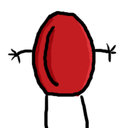Effects of silibinin-loaded thermosensitive liposome-microbubble complex on inhibiting rabbit liver VX2 tumors in sub-hyperthermia fields.
Keywords
Abstract
In the present study, the effects of silibinin-loaded thermosensitive liposome-microbubble complex (STLMC) on rabbit liver VX2 tumors in sub-hyperthermia fields were investigated using two-dimensional ultrasonography (2D US), contrast-enhanced US (CEUS), hematoxylin and eosin (H&E) staining, immunohistochemistry and ultrastructure observation. 50 rabbits with VX2 liver tumors were divided into five groups: Sub-hyperthermia microwave ablation group (SHM), STLMC injection group (STLMC), SHM ablation plus STLMC injection group (SHM + STLMC), microbubble injection group and blank control group without any treatment. Rabbits in each group were examined using 2D US and CEUS in order to evaluate the tumor volume and diameter before treatment and at day 7 and 21 after treatment. Morphology, expression of CD163 and CD206, and ultrastructure of the tumors were assessed. The average post-treatment volume of tumors in group SHM + STLMC was 1.17±0.88 cm3 at day 7 and 2.15±0.96 cm3 at day 21, which was significantly decreased compared with all other groups (P<0.05). H&E staining indicated that the number of disordered macrophages in the SHM + STLMC group significantly increased compared with the other groups (P<0.05). Immunohistochemical results demonstrated that in the SHM + STLMC, the expression of CD163 and CD206 significantly decreased compared with all other groups (P<0.05). These results suggested that STLMC has a potential function in preventing tumor growth, which may be due to its inhibitory effect on tumor-associated macrophages in the tumor microenvironment.





